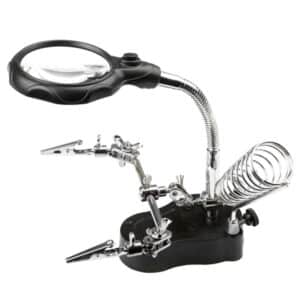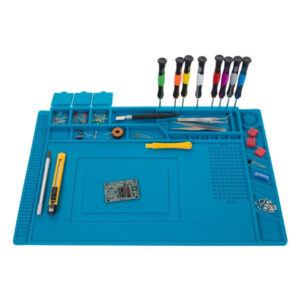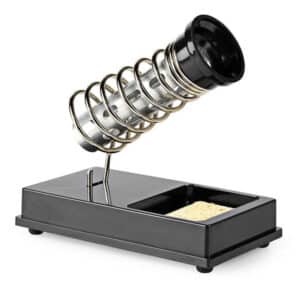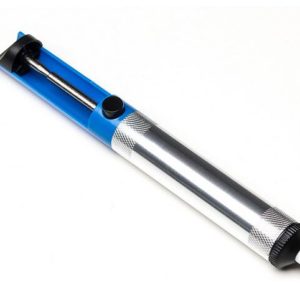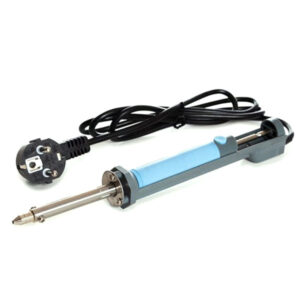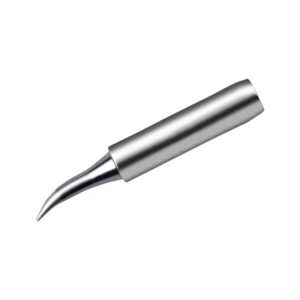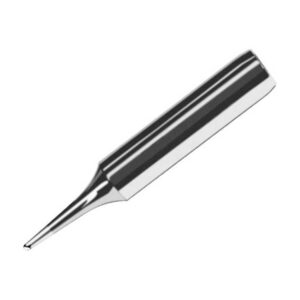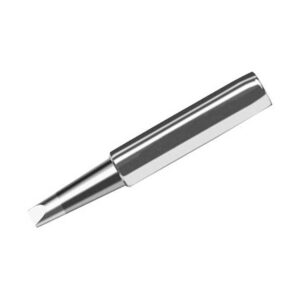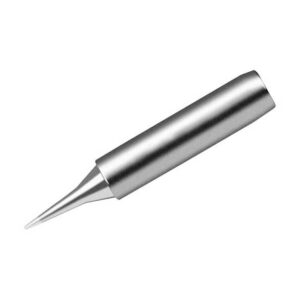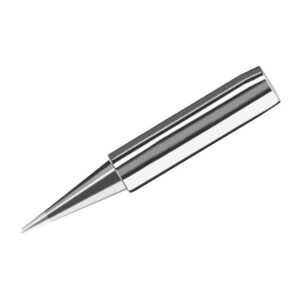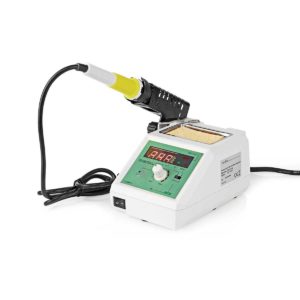soldering
Result 13-24 is shown of the 40 results
-
Magnifying Glass With LED Light And Solder Stand
€14,46 /€11,95 excl. VAT -
Silicone Soldering Mat – 450 x 300mm
€24,95 /€20,62 excl. VAT -
Soldering Iron Holder With Sponge
€7,95 /€6,57 excl. VAT -
Desoldering pump
€4,95 /€4,09 excl. VAT -
Desoldering Pump With Heating Element – 30W
€14,95 /€12,36 excl. VAT -
Soldering tip - 160 ° Conically bent
€3,85 /€3,18 excl. VAT -
Soldering Tip - 45 ° Chisel
€3,94 /€3,26 excl. VAT -
Soldering tip - 60 ° angled
€3,85 /€3,18 excl. VAT -
Soldering tip - Chisel
€3,85 /€3,18 excl. VAT -
Soldering Tip - Conical
€3,85 /€3,18 excl. VAT -
Soldering tip - Conical - 45 ° angled
€3,85 /€3,18 excl. VAT -
Digital Soldering Station | 160 - 480 ˚C
€79,94 /€66,07 excl. VAT
How does soldering work?
Soldering works by melting the solder using heat. The solder then flows into the space between the two metal parts and forms a strong bond as it cools and hardens. It is important to choose the right solder for the material being joined. There are several types of solder available, each with its own melting point and properties.
To solder it is important to heat the solder properly. This can be done using, for example, a soldering iron or soldering station. It is important to use the heat source that best suits the work to be done. A temperature that is too high or too low can lead to poor results.
It is also important to use the correct technique when soldering. For example, it is important to place the solder in the right place and to use the heat source correctly. It is also important to ensure that the parts to be soldered are properly cleaned. They must be free of rust, dirt or other contaminants.
Which soldering tool do I need?
To solder you will need some essential tools, including:
- Soldering iron or soldering station: This is an electrically heated tool used to melt and place the solder.
- Solder: This is the alloy used to join the metal parts together.
- Flux: This is a substance used to hold the solder in the right place and prevent oxidation.
- Wire cutters or wire cutters: This is used to cut and bend wire to the correct length for soldering.
- Third hand: This is a tool used to hold the workpiece in place while it is being soldered.
- Soldering Iron Holder: This is a holder used to hold the soldering iron in place while soldering.
- Safety Goggles: This is important to protect your eyes from solder spatter and sparks.
Need soldering advice? 10 soldering tips
Although soldering is a skill that can be learned, it can be tricky to master. Here are ten soldering tips that can help you achieve better results:
- Make sure that the parts to be soldered are clean. Remove dirt, grease and rust with a sandpaper or wire brush.
- Use the correct solder for the material being joined. There are different types of solder available for different applications.
- Use a good flux to keep the solder in the right place and to prevent oxidation.
- Heat the soldering spot evenly with the soldering iron or soldering station. Avoid placing the soldering iron in one spot for too long.
- Allow the solder to melt and flow into the gap between the two parts to be joined.
- Hold the soldering iron at the correct angle and distance from the workpiece. Too steep an angle or too far away will not generate enough heat and can lead to poor results.
- Use a third hand to hold the workpiece in place while it is being soldered.
- Allow the solder to cool and harden before moving the workpiece. This prevents the solder from breaking and weakening the connection.
- Remove excess solder with a solder pump or solder wire.
- Practice regularly to improve your soldering skills. Start with simple projects and work your way up to more complex projects.
With these soldering tips in mind, you'll be better prepared to solder and get better results. Remember that practice and patience are the key to soldering success.

